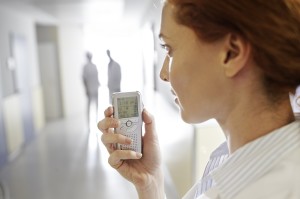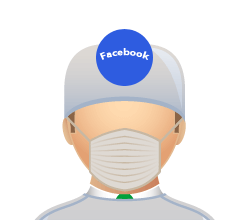The Wall Street Journal (A Doctor’s Visit Without the Cold Stethoscope) tested out four services that offer to put patients in quick touch with doctors for affordable clinical consultations.
The Wall Street Journal (A Doctor’s Visit Without the Cold Stethoscope) tested out four services that offer to put patients in quick touch with doctors for affordable clinical consultations. The Journal’s “Cranky Consumer” column regularly tests product and service offerings outside of health care (things like online photo services or mail order shirts) and what strikes me about their latest column is just how immature these telemedicine offerings are compared to what they normally review.
The basic premise is that the services aggregate physicians on one side and patients on the other, then bring them together in real-time or close to it. The technology needed to do this is fairly involved, but has become much more feasible in recent years as the Internet has evolved and become ubiquitous. The challenges include the fact that doctors are still doctors, and that licensing and regulatory rules were designed for a different era.
Two services, InteractiveMD.com and Ringadoc basically failed. After registering and filling out a medical history, the reporter booked an appointment with the doctor for the following morning. The doctor didn’t call as s/he was supposed to, and didn’t call back for the rescheduled appointment later in the day either. Eventually a physician was reached the next day –and the advice received was useful.
With Ringadoc, the idea is that the patient is connected to a doctor more or less instantly. The reality is that no doctor picked up either time the reporter called.
The reporter spoke to the CEOs of both companies who had handy excuses. InteractiveMD said, “It’s a brand new technology and brand-new bedside manner.” Ringadoc said the service was in beta and only really working in California. He also said it will be available in 20 states next year, which I highly doubt. The real challenge here is not the technology or even the business model, but rather trying to feed doctors into these services like cogs in a wheel. If you can’t go to your own doctor and be seen at a specific time, why does InteractiveMD think it can have a doctor call you on a schedule? And what makes Ringadoc think it can put doctors into a pool and tap them as though they are customer service agents from an airline?
The other two services tested –Healthcaremagic.com and Healthtap.com– are a bit more promising, because they match actual physician behavior patterns. For starters, neither one promises real-time communication with a physician. Healthcaremagic is India based; physicians there have time to answer online questions thoroughly for a relatively low cost. Healthtap.com lets users ask brief questions for free. Doctors answer quickly –partly because they are trying to drum up new patients to actually see in their offices.
Ideas like this have been around for more than a decade, and yet they are still in their infancy. Perhaps we’ll see more progress in the next decade.






